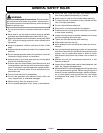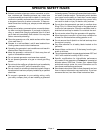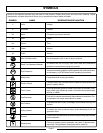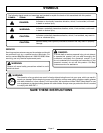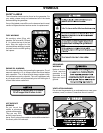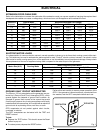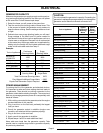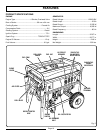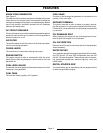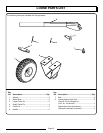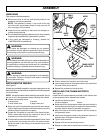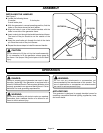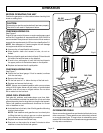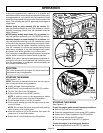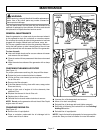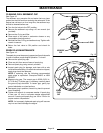
Page 11
KNOW YOUR GENERATOR
See Figure 2.
The safe use of this product requires an understanding of the
information on the product and in this operator’s manual as
well as a knowledge of the project you are attempting. Before
use of this product, familiarize yourself with all operating
features and safety rules.
AC CIRCUIT BREAKER
The circuit breaker is provided to protect the generator against
electrical overload and can be used to turn the generator’s
electrical power on or off.
AIR FILTER
The air filter helps to limit the amount of dirt and dust drawn
into the unit during operation.
CHOKE LEVER
The choke lever is used when starting the engine.
ENGINE SWITCH
The engine switch is used in combination with the recoil
starter grip to start the generator. It is also used to turn the
generator off.
FUEL LEVEL GAUGE
Consult the fuel level gauge to determine the amount of fuel
remaining in the generator.
FUEL TANK
The fuel tank has a capacity of 6.5 gallons.
FUEL VALVE
The flow of fuel through the generator is controlled by the
position of the fuel valve.
GROUND TERMINAL
The ground terminal is used to assist in properly ground-
ing the generator to help protect against electrical shock.
Consult with a local electrician for grounding requirements
in your area.
OIL DRAINAGE BOLT
When changing the engine oil, the oil drainage bolt is loos-
ened to allow old engine oil to be drained.
OIL CAP/DIPSTICK
Remove the oil fill cap to check and add oil to the generator
when necessary.
RECEPTACLES
Your generator has the following single phase, 60 Hz outlets:
four 120 Volt AC, 20 Amp GFCI receptacles, and one 240
Volt AC, 30 Amp receptacle. These can be used for operat-
ing appropriate appliances, electrical lighting, tools, and
motor loads.
RECOIL STARTER GRIP
The recoil starter grip is used (along with the engine switch)
to start the generator’s engine.
FEATURES



